History of Verezzo
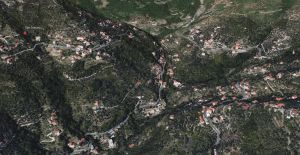 Verezzo is distributed in several scattered hamlets (San Donato, Sant'Antonio, Ponte, Rodi, Case Ghersi) in the basin of Rio San Martino, bordered by the ridge of Colla Bella and Costa Bandita, on the south-eastern side of Monte Bignone.
Verezzo is distributed in several scattered hamlets (San Donato, Sant'Antonio, Ponte, Rodi, Case Ghersi) in the basin of Rio San Martino, bordered by the ridge of Colla Bella and Costa Bandita, on the south-eastern side of Monte Bignone.
The toponym probably derives from the Latin predial term Veretium, while the hypothesis that the name of the locality derives from the thatched thatched hovels called "villeggi" and built by the farmers to avoid having to return to their houses in the city, about ten kilometres away, as well as to defend themselves sometimes from the ravages of time, is presumably fanciful.
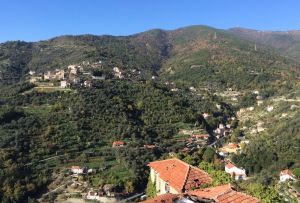 The territory of Verezzo was presumably inhabited since the most remote periods of protohistory by tribes dedicated to agriculture and sheep farming, while the existence in the area of primitive fortifications built with dry-stone walls in close and constant connection with each other, the so-called "castellari", is documented. These fortifications represented for several centuries a valid defence of cultivated land, pastures, woods and the main communication routes from raids by enemy raiders and tribes.
The territory of Verezzo was presumably inhabited since the most remote periods of protohistory by tribes dedicated to agriculture and sheep farming, while the existence in the area of primitive fortifications built with dry-stone walls in close and constant connection with each other, the so-called "castellari", is documented. These fortifications represented for several centuries a valid defence of cultivated land, pastures, woods and the main communication routes from raids by enemy raiders and tribes.
The castellari were built on the top of the hills so that they could control the entire territory below and make it difficult for outsiders to access them, so much so that the chosen reliefs always had steep or rocky walls on one or more of the sides. The walls were made up of large boulders available on the site, while in the inner area of the castles there were huts and some small houses. In the larger castellars, entire villages and areas used for grazing livestock could be accommodated. The defensive organisation, which was decisively advanced for the times, also provided for the visual connection between all the keepers, who, in case of danger, could warn each other by means of smoke signals or sounds produced by horns and sea shells so that the inhabitants and the animals could be safe inside the different fortifications until the emergency was finally over.
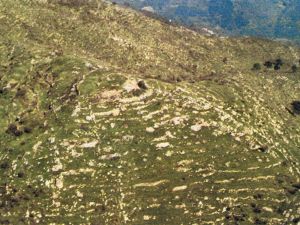 One of the most important castles situated on the belt of the Sanremo mountains is the one located on the summit of Monte Colma (649 metres), overlooking the village of Verezzo. This castle, probably the most complete and the best preserved of all the extreme western part of Liguria, has polygonal walls formed by a double parallel cordon of small stones, nine metres thick on the northern and southern side of the building; the other two wings, erected on a bare and steep ground, are only one metre thick. The height of the walls amounts to about three metres, while the entire castellaro extends over an area more than one hundred metres long. In the inner part of the castle castle, the remains of a square building, the ruins of a lookout tower and a flat area in the southern part of the castle have come to light, the destination of which could not be ascertained. Next to the outer walls, on the other hand, a number of small buildings dating back to pre-Roman and Roman times have been identified, which probably represent what is left of two distinct villages inhabited by shepherds and farmers in the area in protohistoric times. The remains of a small Roman-age building located in the surroundings of the castellaro and destroyed by a fire probably attest to the abandonment of the site in Roman times. Among the numerous finds, usually ceramics, found inside the building and datable between the 5th century B.C. and the 3rd century A.D., the remains of Massaliote amphorae (from Massalia, Greek name for Marseille), found in the locality of «Ture» just beyond the church of Sant'Antonio, are particularly significant to establish the extent of the relationship between these populations and the Greek colonies of nearby Provence. They represent a clear indication of a probable commercial exchange that took place locally or even the fruit of a loot of pirate actions.
One of the most important castles situated on the belt of the Sanremo mountains is the one located on the summit of Monte Colma (649 metres), overlooking the village of Verezzo. This castle, probably the most complete and the best preserved of all the extreme western part of Liguria, has polygonal walls formed by a double parallel cordon of small stones, nine metres thick on the northern and southern side of the building; the other two wings, erected on a bare and steep ground, are only one metre thick. The height of the walls amounts to about three metres, while the entire castellaro extends over an area more than one hundred metres long. In the inner part of the castle castle, the remains of a square building, the ruins of a lookout tower and a flat area in the southern part of the castle have come to light, the destination of which could not be ascertained. Next to the outer walls, on the other hand, a number of small buildings dating back to pre-Roman and Roman times have been identified, which probably represent what is left of two distinct villages inhabited by shepherds and farmers in the area in protohistoric times. The remains of a small Roman-age building located in the surroundings of the castellaro and destroyed by a fire probably attest to the abandonment of the site in Roman times. Among the numerous finds, usually ceramics, found inside the building and datable between the 5th century B.C. and the 3rd century A.D., the remains of Massaliote amphorae (from Massalia, Greek name for Marseille), found in the locality of «Ture» just beyond the church of Sant'Antonio, are particularly significant to establish the extent of the relationship between these populations and the Greek colonies of nearby Provence. They represent a clear indication of a probable commercial exchange that took place locally or even the fruit of a loot of pirate actions.
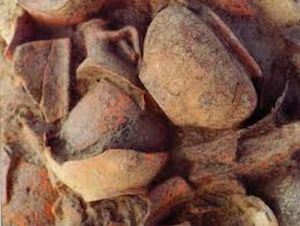
 All the archaeological finds that have come to light on Mount Colma and in the vicinity of Verezzo testify to the continuity of the territory behind Sanremo from the Iron Age, characterized by the erection of the first castle buildings on the hills surrounding the present town, up to the settlements of the Roman Age, which represent the continuation of the human frequentation of the area after the Roman conquest of Western Liguria in the second half of the 2nd century B.C. and then definitively stabilized after the pacification of the Alpine peoples in the middle of the Augustan Age.
All the archaeological finds that have come to light on Mount Colma and in the vicinity of Verezzo testify to the continuity of the territory behind Sanremo from the Iron Age, characterized by the erection of the first castle buildings on the hills surrounding the present town, up to the settlements of the Roman Age, which represent the continuation of the human frequentation of the area after the Roman conquest of Western Liguria in the second half of the 2nd century B.C. and then definitively stabilized after the pacification of the Alpine peoples in the middle of the Augustan Age.
After the fall of the Western Roman Empire, the area of Verezzo was devastated by barbarian raids, passing under the domination of the Byzantines, who endowed the territory of Western Liguria with an efficient defensive system to prevent any external attacks; in particular in the Western Riviera, around 553 six military districts were established, revolving around as many fortified centres, while the extreme Western Liguria was administratively included in the Byzantine circumscription of the Maritima Italorum Province.
The Byzantines were succeeded in the 7th century by the Longobards led by Rotari, who in 643 conquered and devastated several Ligurian villages, including perhaps the primitive inhabited centre of today's Verezzo.
In 774 the Longobard domination was succeeded by the Franks, who occupied the Riviera di Ponente until 888.
During the Carolingian period the territory of western Liguria was divided into committees, entrusted to the temporal jurisdiction of a count belonging to the Frankish aristocracy. The present town of Verezzo and the territory around the Villa Matutiana (today's Sanremo) then entered the sphere of influence of the Committee of Ventimiglia, whose territory coincided in fact with that of the relative municipality of the Roman age.
The Ventimiglia Committee also corresponded to the jurisdiction of the equivalent intemelia diocese, which extended its religious power over an area that reached as far east as the Armea torrent and also included the Matutian district.
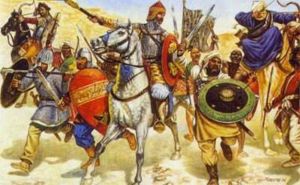 Between the IX and the X century many inhabitants of the Villa Matutiana, in order to avoid the risk of raids and looting by the Saracen corsairs, who ravaged and plundered the Ligurian coast at the time, decided to take refuge in the mountains surrounding the coastal village and planted new settlements there. Among the latter there must have been, in all probability, the primitive nucleus of Verezzo, where the Matuzians who had taken refuge there began to build their first dwellings and dedicate themselves to agricultural activities. The rural area of the village probably began to be inhabited in a stable and permanent way after the construction of the two main churches of the village by families of farmers who gave the name to the different hamlets and groups of houses: the Modena, the Moreni, the Giordani, the Ghersi and others.
Between the IX and the X century many inhabitants of the Villa Matutiana, in order to avoid the risk of raids and looting by the Saracen corsairs, who ravaged and plundered the Ligurian coast at the time, decided to take refuge in the mountains surrounding the coastal village and planted new settlements there. Among the latter there must have been, in all probability, the primitive nucleus of Verezzo, where the Matuzians who had taken refuge there began to build their first dwellings and dedicate themselves to agricultural activities. The rural area of the village probably began to be inhabited in a stable and permanent way after the construction of the two main churches of the village by families of farmers who gave the name to the different hamlets and groups of houses: the Modena, the Moreni, the Giordani, the Ghersi and others.
After the medieval centuries, during which the town of Verezzo had further developed thanks also to the initiative of the numerous farmers who had settled there, attracted also by the particular mild climate and the amenity of the valley immersed in the green pine and chestnut woods, the area of Verezzo was involved from the first half of the 16th century in the bitter clash between the local population and the Barbary pirates who infested the western Liguria region devastating wildly the main towns of the coast and the hinterland. In the summer of 1543 Verezzo was at the centre of the most important armed clash between the Turks and the Sanremesi, who inflicted a heavy defeat on the dangerous corsairs. It all started at the beginning of July of that year, when a huge Turkish army, made up of about one hundred and fifty galleys, paraded in front of Sanremo under the command of the Turkish admiral Ariadeno, called Barbarossa, well known for his particular audacity; a squadron of Barbary pirates, coming from Berberia, a region of North Africa, well known for their ferocity and greed, had joined that already imposing fleet. This situation only further exacerbated the anxiety and trepidation of the Sanremesi, who night and day began to watch the moves of those ships that stopped in front of Villafranca and ordered the Nizzardi to surrender at their discretion.
In the summer of 1543 Verezzo was at the centre of the most important armed clash between the Turks and the Sanremesi, who inflicted a heavy defeat on the dangerous corsairs. It all started at the beginning of July of that year, when a huge Turkish army, made up of about one hundred and fifty galleys, paraded in front of Sanremo under the command of the Turkish admiral Ariadeno, called Barbarossa, well known for his particular audacity; a squadron of Barbary pirates, coming from Berberia, a region of North Africa, well known for their ferocity and greed, had joined that already imposing fleet. This situation only further exacerbated the anxiety and trepidation of the Sanremesi, who night and day began to watch the moves of those ships that stopped in front of Villafranca and ordered the Nizzardi to surrender at their discretion.
Long days of deep discouragement alternated with hope on the part of the Niçois, uncertain whether to lose their possessions and their lives with a surrender without combat, or to attempt a defence against enormously superior forces. Meanwhile Barbarossa preferred to wait in the certainty of obtaining the coveted loot without running the risk of loss. On 4th August the podestà of Sanremo Luca Spinola wrote to the Genoese government to inform him that a Sanremo citizen returning from Provence had told him that he had seen the Turkish fleet at the height of its power with many galleys loaded with men ready to land and a large quantity of assault material consisting of ladders, lime and wood.
In the meantime, the Barbarian team, either by order of Barbarossa or by independent decision, but certainly driven by impatience and a strong desire to plunder a substantial booty, attempted a landing with nine galleys on the beaches of Sanremo at dawn on 7th August, but they were carefully guarded by armed men ready for defence. The pirates, given the situation to their disadvantage, then implemented an ingenious stratagem: they pretended to give up the enterprise by sailing towards the east, but as soon as they turned the Cape Armea (today Cape Verde) they disembarked at the mouth of the torrent and headed decisively towards Poggio and Verezzo, in order to take Sanremo behind them, perhaps led by some practical renegades of the places. 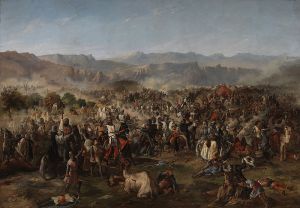 The trap was not successful, however, because the Sanremesi did not believe in the barbaric renunciation of the enterprise and therefore followed the enemy's moves, whose plan of circumvention they had intuited. At the sudden arrival of the pirates in the locality of Parà a Verezzo, the Sanremesi militiamen had already positioned themselves in the most strategic points waiting for the enemy's assault, while another contingent of Sanremesi was waiting for the enemy in the area of Poggio Radino.
The trap was not successful, however, because the Sanremesi did not believe in the barbaric renunciation of the enterprise and therefore followed the enemy's moves, whose plan of circumvention they had intuited. At the sudden arrival of the pirates in the locality of Parà a Verezzo, the Sanremesi militiamen had already positioned themselves in the most strategic points waiting for the enemy's assault, while another contingent of Sanremesi was waiting for the enemy in the area of Poggio Radino.
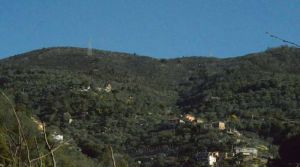 The Barbareschi tried in vain to force the barricade, trusting in their fame as ferocious and courageous fighters and perhaps also in their numerical superiority, but they had to face the fierce resistance of the Sanremesi, led by the podestà Spinola, They fought strenuously for eight hours before they were right about the pirates, who eventually had to flee, but not before having kidnapped many women and children from Verezzo, Poggio and the other hamlets of Sanremo who had been caught in the open air and who unfortunately never returned. The Turks, leaving the territory of Sanremo angry for the lack of success of the attack, made heavy threats to the coastal sentries warning them that they would soon return for revenge.
The Barbareschi tried in vain to force the barricade, trusting in their fame as ferocious and courageous fighters and perhaps also in their numerical superiority, but they had to face the fierce resistance of the Sanremesi, led by the podestà Spinola, They fought strenuously for eight hours before they were right about the pirates, who eventually had to flee, but not before having kidnapped many women and children from Verezzo, Poggio and the other hamlets of Sanremo who had been caught in the open air and who unfortunately never returned. The Turks, leaving the territory of Sanremo angry for the lack of success of the attack, made heavy threats to the coastal sentries warning them that they would soon return for revenge.
The battle of the Parà, which took place on the day of San Donato, was destined to become a symbolic and particularly significant date as it represented a great and unexpected victory for the Sanremese over the feared Barbary pirates, who had been clamorously defeated at the very moment of their greatest power.
On 7th August 1607 the Sanremo Town Council proclaimed the day on which the battle of the Parà solemn city feast day had taken place, while in the same years it was also decided to celebrate the important event with the construction in Verezzo of a church dedicated to San Donato near the site of the battle, built in 1556 and then replaced by today's church further enlarged around 1630.
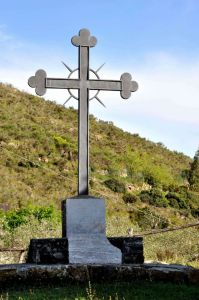 It was also established that a delegation of Sanremesi would go in procession every year to the church of Our Lady of the Angels to celebrate the important event, which would also be commemorated by the erection of a large cross, which still exists today, on the site of the battle in the locality of Parà, in the future and perennial memory of the decisive victory brought by the Sanremesi over the Turks.
It was also established that a delegation of Sanremesi would go in procession every year to the church of Our Lady of the Angels to celebrate the important event, which would also be commemorated by the erection of a large cross, which still exists today, on the site of the battle in the locality of Parà, in the future and perennial memory of the decisive victory brought by the Sanremesi over the Turks.
A few months after the battle of the Parà, news came to Sanremo from Nice that gave good hope for a forthcoming liberation of the inhabitants of Verezzo and Poggio captured by the Turks during the raid of 7 August 1543. Captain Antonio Gaudo had in fact advised the podestà Spinola to deal with the Count of Anguillara and Barbarossa himself. Spinola then sent a scribe to Nice who was received amicably by the Anguillara and also had a conversation with Barbarossa, from whom he obtained only the promise to postpone the solution of the matter until after the final surrender of Nice, because at that moment it was not possible to trace all the captains of the galleys, scattered here and there in the vast theatre of war.
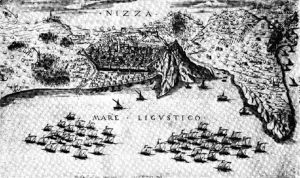 The only concession that the Spinola envoy managed to snatch from the Turkish admiral was to obtain a safe-conduct that allowed the Sanremo ships to freely exercise their commercial activity in Provence and wherever they wanted, while for the captured inhabitants of Verezzo and Poggio there was nothing more to do and it is very likely that these unfortunate prisoners ended their days as slaves in some barbaric galleys or died of hardship in a Turkish prison. Once the barbaric threat ceased, life resumed also in Verezzo, where in 1680 the presence of a canon is documented. In the church of San Donato he gave a Sunday sermon to the faithful and taught Christian doctrine to the farmers' children.
The only concession that the Spinola envoy managed to snatch from the Turkish admiral was to obtain a safe-conduct that allowed the Sanremo ships to freely exercise their commercial activity in Provence and wherever they wanted, while for the captured inhabitants of Verezzo and Poggio there was nothing more to do and it is very likely that these unfortunate prisoners ended their days as slaves in some barbaric galleys or died of hardship in a Turkish prison. Once the barbaric threat ceased, life resumed also in Verezzo, where in 1680 the presence of a canon is documented. In the church of San Donato he gave a Sunday sermon to the faithful and taught Christian doctrine to the farmers' children.
On the occasion of the 1753 revolution against Genoa, Verezzo courageously sided with the Sanremesi. Lorenzo Bonfante, one of the 481 inhabitants of the hamlet, guilty of having rang the hammer bell, of having incited his fellow countrymen to revolt and of having opposed a picket of Corsican soldiers with weapons, was condemned to exile and could only return to his village after several years. In the month of July, General Agostino Pinelli, leader of the Genoese contingent sent to the city of Matuzzo, led a punitive expedition against Verezzo and Poggio to punish the inhabitants of the two hamlets accused of not having practised any act of submission towards the Genoese government, and also imposed heavy contributions, appropriating the livestock and collecting the sum of 1.373 lire, as the first and partial contribution of the local population to compensate for the damage caused by the rebellion against the Republic.
These measures did not, however, exhaust the initiative of the "Verezenchi", who began a form of passive resistance against Genoa. In 1756, in fact, they had not yet renewed the annual offices of the consuls and subsequently refused to submit the community documents to the prescribed Genoese approval.
 In June 1753 the Genoese government had in the meantime entrusted Colonel Matteo Vinzoni with the task of building a map of Sanremo and compiling a complete cadastre of the lands, houses, woods and meadows of private individuals in order to be able to apply new taxes and hit the Sanremesi financially.
In June 1753 the Genoese government had in the meantime entrusted Colonel Matteo Vinzoni with the task of building a map of Sanremo and compiling a complete cadastre of the lands, houses, woods and meadows of private individuals in order to be able to apply new taxes and hit the Sanremesi financially. 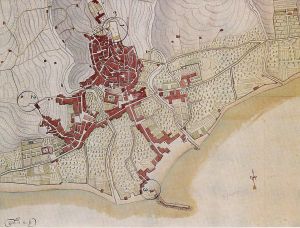 Once the practice of delimiting the boundaries between the Matuziano territory and the Collantino territory was completed on 11th August, Vinzoni immediately started the first investigations for the drawing up of the city cadastre, wanted by the Genoese authorities in order to apply the taxes and adequate contributions to the citizens' census. The operations, carried out by thirty-six admirers, however, proceeded slowly, also because of the tendency of the people of Sanremo to conceal the real value of their properties as much as possible, so much so that in October 1753 the work was finished only for Poggio, half of the territory of Verezzo and one sixth of that of Sanremo.
Once the practice of delimiting the boundaries between the Matuziano territory and the Collantino territory was completed on 11th August, Vinzoni immediately started the first investigations for the drawing up of the city cadastre, wanted by the Genoese authorities in order to apply the taxes and adequate contributions to the citizens' census. The operations, carried out by thirty-six admirers, however, proceeded slowly, also because of the tendency of the people of Sanremo to conceal the real value of their properties as much as possible, so much so that in October 1753 the work was finished only for Poggio, half of the territory of Verezzo and one sixth of that of Sanremo.
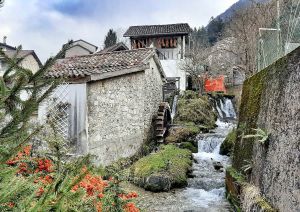 The remarkable development of economic activities in the area of Verezzo in the second half of the XVIII century is confirmed by the presence of a Statute that the millers of the village had given themselves in 1765. The document shows that the millers of Verezzo were then particularly numerous because in the Sanremo hamlet the greatest production of wheat was concentrated, with subsequent transformation into flour for the population of Sanremo. The territory towards the sea was cultivated with citrus fruits, the one a little further inland, precisely the area of Verezzo San Donato, supplied the wheat. In Sanremo there was only one mill located near the Ciapéla, while in Verezzo there were several mills, as confirmed by the Millers' Statute.
The remarkable development of economic activities in the area of Verezzo in the second half of the XVIII century is confirmed by the presence of a Statute that the millers of the village had given themselves in 1765. The document shows that the millers of Verezzo were then particularly numerous because in the Sanremo hamlet the greatest production of wheat was concentrated, with subsequent transformation into flour for the population of Sanremo. The territory towards the sea was cultivated with citrus fruits, the one a little further inland, precisely the area of Verezzo San Donato, supplied the wheat. In Sanremo there was only one mill located near the Ciapéla, while in Verezzo there were several mills, as confirmed by the Millers' Statute.
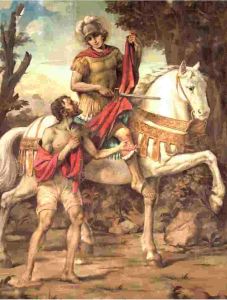 Like all societies of arts and crafts, also the millers' society of Verezzo had its patron saint: St. Martin, so much so that the first rule of the Statute imposed religious respect for the festive day of 11th November. On that day in 1765 the millers gathered together to solemnly confirm in writing that they were celebrating the feast day in a compact and concordant manner, and decreed that from then on the solemn Mass would be celebrated in their church of San Donato, since the parish church of San Siro was too far away. Each working miller also undertook to personally attend the sung Mass, Vespers and other sacred services, on pain of a fine of four lire for those absent without justified reason.
Like all societies of arts and crafts, also the millers' society of Verezzo had its patron saint: St. Martin, so much so that the first rule of the Statute imposed religious respect for the festive day of 11th November. On that day in 1765 the millers gathered together to solemnly confirm in writing that they were celebrating the feast day in a compact and concordant manner, and decreed that from then on the solemn Mass would be celebrated in their church of San Donato, since the parish church of San Siro was too far away. Each working miller also undertook to personally attend the sung Mass, Vespers and other sacred services, on pain of a fine of four lire for those absent without justified reason.
The art was governed by a Consul elected by secret vote on St. Martin's Day every year, while on the day of the patron saint no miller, nor their helpers, could grind wheat, barley and similar grains from dawn to dusk, nor was it lawful to bring wheat to the mill or bring out flour. Everyone had to pay to the resigning Consul the established quota of money, proportionate to the amount of work done during the year; these quotas were used for religious expenses on St. Martin's Day, when the Consul had to give a public account of income and expenditure. Moreover, all the millers were obliged to intervene every year at the solemn Corpus Christi procession that took place in Verezzo, carrying a four lira candle; a heavy fine was foreseen for those who did not attend the sacred service or for those who did not buy the candle.
 As far as the organisational aspects and the internal life of the association were concerned, the Statutes prescribed that the Consul had to intervene to settle the disputes and controversies that arose between the Molinarians, with the power to judge, but with the assistance of representatives of the Genoese government. He was also entrusted with the control of the work of each miller, so that if he noticed that someone was working badly in the milling or stealing flour, he had to condemn him. Those who wanted to build a new mill, instead, had to warn the Consul and pay him a one-off sum proportionate to the construction, not less than twenty lire but not more than thirty lire, according to the Consul's judgement. This collection, like that coming from possible fines, had to be used for the expenses of the maintenance of the chapel of San Martino erected in the church of San Donato. Those who wanted to learn the art of the miller and join the society had to pay a sum from six to twelve lire according to the judgement of the Consul, except those who had already paid the fee for the construction of the new mill.
As far as the organisational aspects and the internal life of the association were concerned, the Statutes prescribed that the Consul had to intervene to settle the disputes and controversies that arose between the Molinarians, with the power to judge, but with the assistance of representatives of the Genoese government. He was also entrusted with the control of the work of each miller, so that if he noticed that someone was working badly in the milling or stealing flour, he had to condemn him. Those who wanted to build a new mill, instead, had to warn the Consul and pay him a one-off sum proportionate to the construction, not less than twenty lire but not more than thirty lire, according to the Consul's judgement. This collection, like that coming from possible fines, had to be used for the expenses of the maintenance of the chapel of San Martino erected in the church of San Donato. Those who wanted to learn the art of the miller and join the society had to pay a sum from six to twelve lire according to the judgement of the Consul, except those who had already paid the fee for the construction of the new mill.
These Statutes after about ten years were then presented at his request to the government commissioner residing in Sanremo Francesco Doria, who on 21 March 1775 sent them to the Genoese government for approval, complaining about the abuse that the Sanremesi practised before the revolution of 1753 of not requesting the prescribed Genoese ratification of all their regulations.
After the constitution of the Ligurian Republic in 1797, the new Municipality of Sanremo established that the two consuls, who were entrusted with the administration of the hamlets of Poggio and Verezzo, would be replaced by two inspectors, and that the associations of arts and crafts, among which also that of the millers of Verezzo, could no longer intervene with one of their representatives at the Corpus Domini procession.
In the same year Verezzo became part of the Palm District, with Sanremo as its capital, while in April 1798 the hamlet of Sanremo was aggregated to the Palm Jurisdiction, with a civil and criminal court, under the administration of the Canton of Sanremo.
In 1805 Verezzo then became part of the French Empire under the jurisdiction of the Maritime Alps Department, with Nice as its capital. During the Napoleonic age, it is worth mentioning in particular the beginning, in 1809, of a general reorganization of the local school system through the establishment of primary schools in the Sanremo district, which were equipped with French language professorships and other humanistic and scientific disciplines. 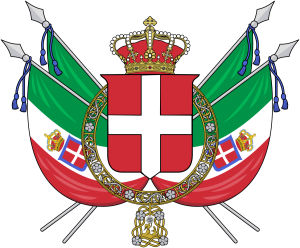 After the fall of the Napoleonic regime, Verezzo became part of the Kingdom of Sardinia in 1815, again as a hamlet of the Municipality of Sanremo.
After the fall of the Napoleonic regime, Verezzo became part of the Kingdom of Sardinia in 1815, again as a hamlet of the Municipality of Sanremo.
From the month of May of the same year the woods surrounding the town of Sanremo began to be infested by a herd of voracious deer wolves, which sowed death and terror. In the context of the fierce fight without quarter against the dangerous beasts, three hunters from Verezzo also stood out. On the 9th September they killed a male specimen with two rifle shots, wandering in the woods near Baiardo. During the course of 1816, however, an intense hunting activity carried out by groups of skilled hunters, among whom some from Valle d'Aosta sent on purpose by the Sardinian government, succeeded in definitively eradicating the scourge of the deer wolves, which had infested the woods for two years.
In June 1831 the community of Verezzo was separated, with a papal bull issued by Pope Gregory XVI, from the Diocese of Albenga to pass, together with numerous other municipalities including that of Sanremo, to the Diocese of Ventimiglia. The bishop Giovanni Battista D'Albertis officially assumed full jurisdiction over the new parishes on 27 August with a solemn ceremony held in the San Siro collegiate church of San Siro in the presence of the parish priest Nicolò Morardi and representatives of the city clergy.
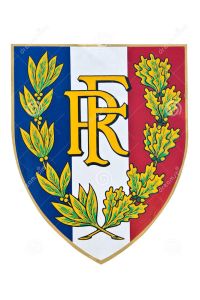 In 1860, following the transfer of the Nice Division to France, Verezzo became part of the new province of Porto Maurizio, again as a fraction of the Municipality of Sanremo. Slight damage was caused by the earthquake of 1887, which, however, did not cause serious injury to the buildings and did not cause casualties or injuries.
In 1860, following the transfer of the Nice Division to France, Verezzo became part of the new province of Porto Maurizio, again as a fraction of the Municipality of Sanremo. Slight damage was caused by the earthquake of 1887, which, however, did not cause serious injury to the buildings and did not cause casualties or injuries.
Between 1880 and 1891, during the administration of the mayor Bartolomeo Asquasciati, the road leading from Sanremo to the village wich was completed in the 1891, under the administration of the mayor Alessandro Escoffier, with the construction of the last two trunks of the route.
On 3 November 1896 the representative of Verezzo Carlo Antonio entered the Town Council chaired by the mayor Augusto Mombello.
During the subsequent administration of Mayor Balestreri, who took office on 21 October 1899, the new drinking water pipeline of the town was built. 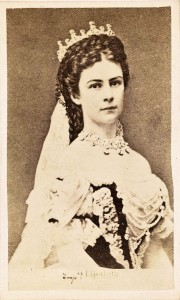 In the second half of the nineteenth century the valley of Verezzo had meanwhile become a destination for excursions by foreign guests, attracted by the rural landscapes and by the particularly suggestive and picturesque features of the landscape of the Sanremo hamlet.
In the second half of the nineteenth century the valley of Verezzo had meanwhile become a destination for excursions by foreign guests, attracted by the rural landscapes and by the particularly suggestive and picturesque features of the landscape of the Sanremo hamlet.
Among the most frequent visitors to the "walk in Verezzo" the chronicles recall in particular the Duchess Elisabeth, well known as Princess Sissi daughter of Maximilian of Bavaria and wife of the Austrian Emperor Franz Joseph, who fell victim to an attack in Geneva in 1898.
After the years of the First World War, during which several soldiers from Verezzo fell, the town was at the centre of a project drawn up in January 1921 by the Council chaired by the mayor Domenico Cotta, which planned to build the new railway station of the planned line upstream at the mouth of the provincial road Sanremo-Poggio-Ceriana-Baiardo, in the neighbourhood of San Martino and Verezzo, while the western one would have been built at the mouth of the Sanremo-Coldirodi mule track in the centre of the Berigo area, but then this project remained only on paper.
After Italy's entry into the war in June 1940, the area of Verezzo was also involved in the war climate, which was particularly felt given the proximity of the town to the theatre of operations against France.
On 14 September 1941 the podestà of Sanremo Silvio Silvestri and the secretary of the Matuziano Fascio Giacomo Ermeglia went to Verezzo to listen to the reasons and proposals that the inhabitants of the hamlet had to make. Accompanied by the Secretary General of the Municipality Carminelli and by the Chief Engineer of the Guidicini Technical Office, the two authorities carried out a quick visit to the village, listening to numerous people who informed them about the greatest and most urgent aspirations of the population, who were on the whole satisfied with the visit and the assurances that the two hierarchs made about the prompt and active interest of the Municipality in the needs and requirements of the inhabitants.
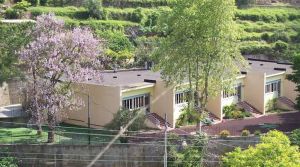 During 1942, Gioacchino Balma, head of the Sanremo school refectory, promoted the activation of a refectory service also in Verezzo, where seventy
During 1942, Gioacchino Balma, head of the Sanremo school refectory, promoted the activation of a refectory service also in Verezzo, where seventy 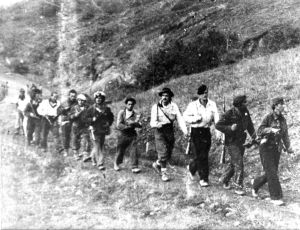 children from the hamlet could use the service. In the days immediately following 8 September 1943, a group of Sanremo citizens led by Dr. Giovanni Cristel, assisted by Antonio Canessa and Alfredo Esposito, reached an agreement with Major Ferrari and Dr. Samà to be able to take weapons and ammunition from the Presidium in Via Lamarmora, which had been abandoned by the military on 9 September, while other weapons were removed from a depot in Corso Garibaldi and delivered to Michele Silvestri, who was part of a group operating in Verezzo, from where they would be taken back to the city with the collaboration of the already mentioned Canessa, who had them taken to a safer place to avoid them ending up in the hands of Germans or Fascists.
children from the hamlet could use the service. In the days immediately following 8 September 1943, a group of Sanremo citizens led by Dr. Giovanni Cristel, assisted by Antonio Canessa and Alfredo Esposito, reached an agreement with Major Ferrari and Dr. Samà to be able to take weapons and ammunition from the Presidium in Via Lamarmora, which had been abandoned by the military on 9 September, while other weapons were removed from a depot in Corso Garibaldi and delivered to Michele Silvestri, who was part of a group operating in Verezzo, from where they would be taken back to the city with the collaboration of the already mentioned Canessa, who had them taken to a safer place to avoid them ending up in the hands of Germans or Fascists.
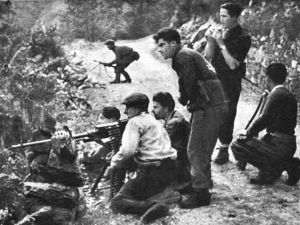 During 1944 the already mentioned partisan Michele Silvestri (Milan), assisted also by his very young daughter Dilanda, organised the first resistance groups in Verezzo, where he formed his own gang, part of the GAP (Groups of Patriotic Action), which on 1 October 1944 would be included in the city's SAP formations.
During 1944 the already mentioned partisan Michele Silvestri (Milan), assisted also by his very young daughter Dilanda, organised the first resistance groups in Verezzo, where he formed his own gang, part of the GAP (Groups of Patriotic Action), which on 1 October 1944 would be included in the city's SAP formations.
During the War of Liberation the GAP detachment of Verezzo operated several coups de manoeuvres thanks to which money, clothing and food were recovered and then sent to the partisan formations of Gino Napolitano and Vincenzo Orengo.
It should also be noted that on 4 December 1944, near Verezzo, a Gap soldier killed a German soldier who wanted to arrest him.
After the Second World War, the valley's lands were home to numerous floricultural cultivations, which today represent the most conspicuous source of income for the population, while vast areas are still covered with thick olive groves and on the slopes of the hills remain large chestnut groves, which resist the changing times and still form a characteristic landscape of past centuries.
(sources: text by Andrea Gandolfo; images from a private and web site)




